InerziaMonitor is an amazing freeware system monitoring utility, that lets you know about a number of important system statistics of your computer. Utterly lightweight and super minimal, InerziaMonitor is packed with a bunch of cool features. It lets you know things like your Computer’s Operating System details, real-time usage of critical hardware resources (processor, RAM etc.), as well as basic information about your system’s essential hardware. It also includes a built in process viewer which you can use to track the individual usage of resources like processor, RAM etc. by the active programs. You can also kill the processes slowing the system down, directly from InerziaMonitor. To top it all off, it even includes one-click launchers to important OS modules and functions. It’s super cool. But hey, don’t just take my word for it. Instead, head past the break to find out more yourself.
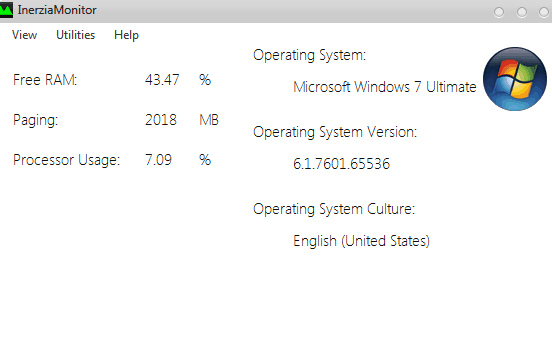
InerziaMonitor: Installation and Main UI
InerziaMonitor is super lightweight (under 2 MB) in size, and its installation is also quite easy and straightforward. Simply download the application (available as a zipped archive) from its homepage, unzip it and install it. That’s all there’s to it. Once the installation is done, launch InerziaMonitor. Here’s how it looks like:
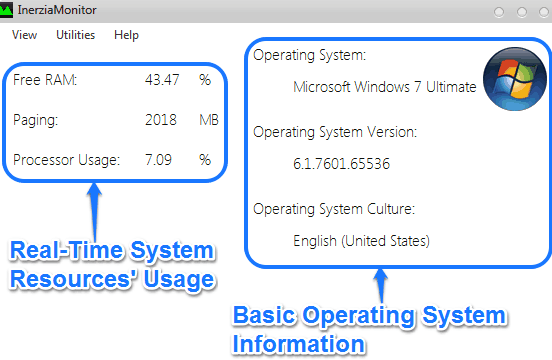
What did I tell you? On launching, InerziaMonitor springs up in almost no time. Probably one of the reasons for this speed is its minimal no frills user interface. When you launch the program for the first time, it gives basic information about your computer’s Operating System. Apart from this, InerziaMonitor also gives you real-time updating information about your computer’s RAM, Page File and Processor usage. This is the default information that you see on launching InerziaMonitor, so that you can quickly monitor the resource usage of your computer. Pretty cool, isn’t it?
Some other resource monitoring software we reviewed earlier include Process Piglet and Win-UFO.
InerziaMonitor: Sub-Modules
Don’t let InerziaMonitor’s minimal interface fool you. It has quite a few aces up its sleeve. The application consists of a few sub-modules, that let you monitor certain other important aspects of your computer. Each of these sub-modules is listed under the View menu in the menu bar. To access a submodule, simply click on View > Select the relevant submodule and it’ll open up in the same window. These submodules are briefly mentioned below:
- Hardware Configuration: The Hardware Configuration subsection opens up a tabbed sub-section that lets you know vital information about your system’s processor, RAM, Graphics Card, Sound Card & BIOS.
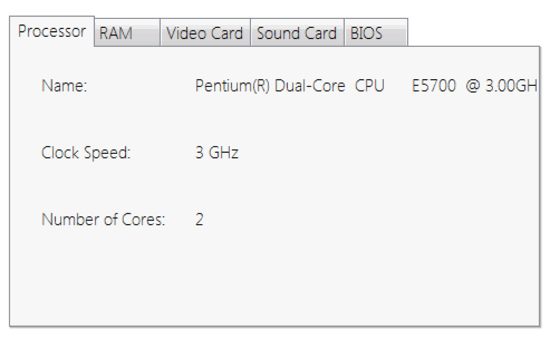
- OS Settings: This lets you get back to the default landing section (The one that shows basic OS information).
- Process Viewer: This is InerziaMonitor’s built-in task manager. You can use it to view a list of active processes, as well as monitor their individual system usage statistics). You can also use it to search for a particular running process, as well as terminate (or kill) running processes.

- Network: This section gives you basic information about you computer’s network connectivity status, as well as your computer’s IPv4 and IPv6 addresses.
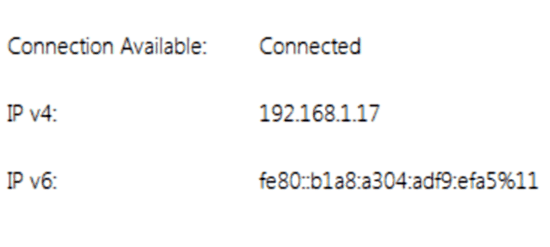
- CPU Graph: The CPU Graph section gives you the CPU usage (in %age) of your computer in the form of a real-time updating graph.
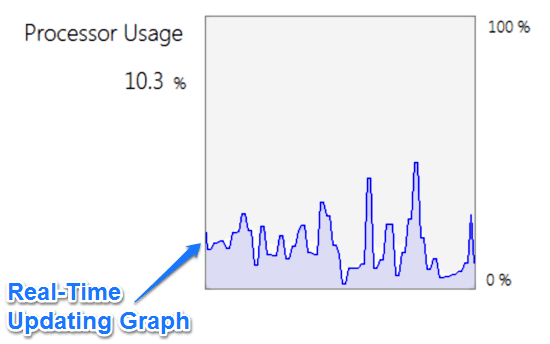
InerziaMonitor: Quick Launch
Apart from having a bunch of nifty system monitoring utilities thrown in together, InerziaMonitor also includes a handy quick launch sub-section that lets you launch some important Windows OS modules via a single click. Accessed via Utilities > Quick Launch from the menu bar, it lets you quickly launch Windows Explorer, Control Panel, Your Computer’s Default Web Browser, Command Prompt and System Configuration. Here’s a screenshot:
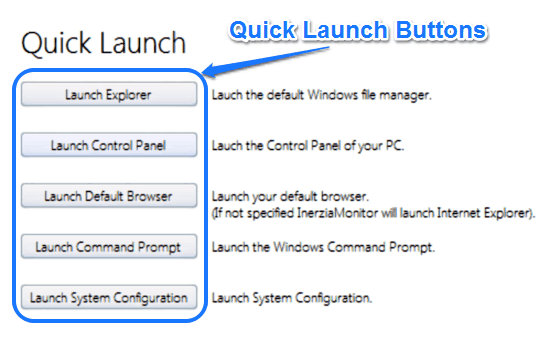
Conclusion
InerziaMonitor is a pretty handy system utility that lets you monitor a multitude of important system statistics from a single interface. It’s simple, easy and does exactly what it says. For the low price of free, it even includes some nifty features like a process viewer and quick launch buttons. What else could you possibly want? Give this little application a try, you’ll love it.